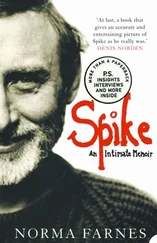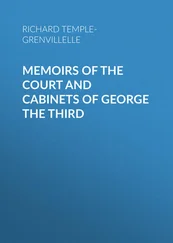In the morning, after some juice, extremely dark coffee, and a biscotti I was ready to leave. I now had in my possession a large trunk filled with purchases the princess had made on Mrs. Kennedy’s behalf. We loaded it on the boat and off to Amalfi I went. The trip back was smoother than the one to Capri, no whitecaps, and we made good time. Arriving at the beach house, we were met by the caretaker, who carried the trunk up to the house. Mrs. Kennedy and Lee were there and very glad to see me, and especially the trunk full of goodies. It was as if Christmas had arrived in August.
Mrs. Kennedy insisted I stay as she and Lee went through the various items of clothing. When I began to tell them about the wild boat ride across the choppy waters, they started laughing hysterically.
“I want you to tell me everything, Mr. Hill,” Mrs. Kennedy said with childlike delight in her voice. “From the moment you left here. Every detail. What Irene said, where you shopped, what you ate for dinner. Don’t leave anything out.”
So, as Mrs. Kennedy and her sister gave me an impromptu fashion show, I regaled them with details of my adventure on the high seas, and the night with the princess on the Isle of Capri.
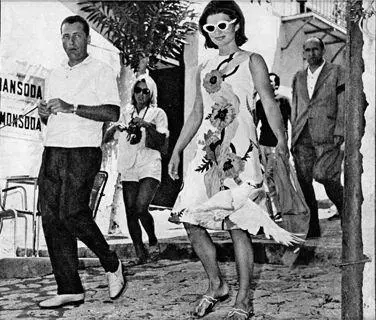
Clint Hill and Mrs. Kennedy in Italy
THUS FAR, I had managed to protect Mrs. Kennedy while also keeping things in line with the president’s instructions. Then one evening Mrs. Kennedy informed me that she, along with Lee, Stash, and their guests, was going to go to Positano—to a nightclub.
The president’s words immediately popped into my head. And above all, no nightclub pictures.
“Okay, Mrs. Kennedy, whatever you want. I’ll handle it,” I said.
We left Ravello and traveled down the coast to Positano, yet another picturesque town on the Amalfi coast. We had alerted the police and advised them to provide a contingent of officers dressed in plainclothes, to make our large group, which included Mrs. Kennedy, several friends, and several Secret Service agents, as inconspicuous as possible. The nightclub was crowded, and while Mrs. Kennedy did not go unnoticed, we managed to keep the paparazzi outside. Everyone was dancing and laughing, having a great time, into the wee hours of the morning. I remember watching Mrs. Kennedy enjoying herself so much with her friends. Oh how I wished I could be out there on the dance floor with them, a participant rather than a bystander.
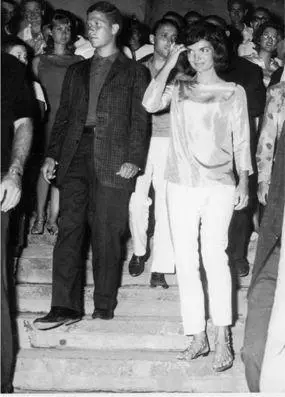
Paul Landis escorts Mrs. Kennedy in Positano
AS THE DAYS went by, everybody fell more in love with Ravello. It was so picturesque, so charming, the people so warm and friendly. Finally, on August 31, we bid farewell to Italy. The three weeks on the Amalfi coast had been nothing less than enchanting, and all of us, especially Mrs. Kennedy, were sad to leave. When I think back and remember those special times, one of the things that stands out is the memory of the view in the evening, looking down the coastline. Anchored in the harbor at Amalfi, a thousand feet below Ravello, the fishing boats and private yachts were decorated with strands of tiny white lights throughout the rigging, so that it looked like a hundred thousand candles dancing in the water. It was magical.
15
October Crisis
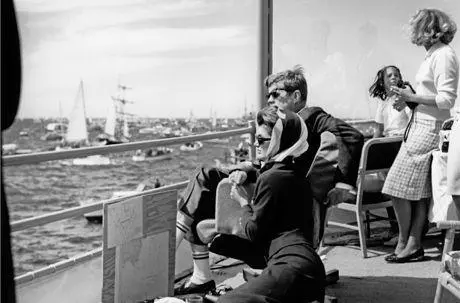
After a month in Hyannis Port and three weeks in Italy, I assumed we would return to Washington, but we ended up flying straight from Rome to New York to Quonset Point, Rhode Island, where the president met us, along with an enormous crowd and full press coverage. It was a wonderful, happy family reunion, and from there we were off to Hammersmith Farm for the next several weeks.
While Mrs. Kennedy typically spent September weekends at Hammersmith Farm, the president was particularly interested in being there in September 1962 because the America’s Cup yacht races were being held off the coast of Newport in Narragansett Bay. The America’s Cup is the oldest active trophy in international sport, a series of races between the defender—the yacht club that last won the title—and the challenger. This year, America’s team from the New York Yacht Club was defending its title against Australia—the first time the challenger was from a country other than Great Britain or Canada. There were plenty of social events surrounding the races, including a reception for crew members at Hammersmith Farm and a black-tie dinner in honor of the Australian and American competitors, which created plenty of work for the Secret Service.
After spending so much time on the Agneta, Mrs. Kennedy appeared to take a real interest in the races, which seemed to please the president. It was an entirely new sport for me to watch and I found it interesting—especially the days we were aboard the USS Joseph P. Kennedy, Jr. , a U.S. Navy destroyer named after the president’s older brother, who was killed during World War II. Some of the races were very close, and in the end the New York Yacht Club’s Weatherly defeated Australia’s Gretel 4–1 in the best-of-seven race series.
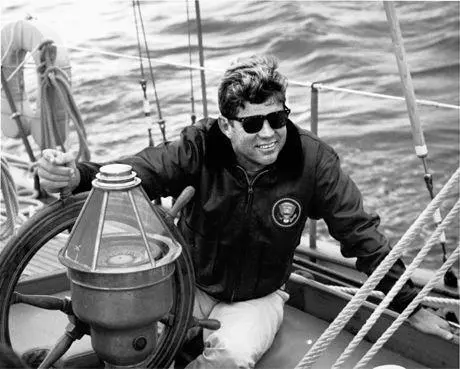
Clint Hill’s favorite photo of JFK at the helm of the Manitou
Also around this time, a new yacht joined the mix of boats the president had at his disposal. The USS Manitou was a beautiful sixty-two-foot yawl, a Coast Guard vessel, brought to Newport as an addition to the presidential fleet specifically because of the president’s love of the sea and sailing. The president was excited about the opportunity to have a large sailing yacht available, and the Manitou had everything he wanted. She was sleek, fast, and maneuverable, and capable of taking overnight trips with sleeping accommodations for nine people.
The last two weeks of September were a blur as we traveled between Newport and Hyannis Port—to visit the president’s father and so the president and Mrs. Kennedy could vote for Teddy Kennedy in his first senatorial primary—and then back to Newport, followed by a one-night stop in New York City, where I accompanied Mrs. Kennedy to the brand-new Philharmonic Hall for a performance of the New York Philharmonic Orchestra, led by Leonard Bernstein, then back to Newport again for the finish of the America’s Cup races. While the president returned to Washington during the weekdays, Mrs. Kennedy intended to stay at Hammersmith Farm with the children until October 9, 1962. We did have a brief return to Washington—to Middleburg, actually—because President Ayub Khan of Pakistan happened to be visiting the United States.
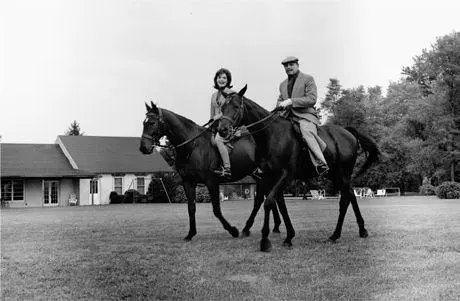
Mrs. Kennedy and Ayub Khan riding together at Glen Ora
Mrs. Kennedy was eager to show Ayub Khan how delighted she was with Sardar, and she insisted on him coming to Glen Ora, so that they could ride together. There was nothing romantic between Mrs. Kennedy and Ayub Khan but their mutual love of horses was the bond they shared, and Sardar was the emblem of that bond. President Kennedy also realized that the first lady’s trip to India and Pakistan earlier in the year had been immensely successful in the Cold War campaign to promote the interests and ideology of the United States around the world.
Читать дальше










